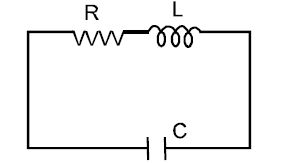Embibe Experts Solutions for Chapter: Alternating Current, Exercise 3: Exercise - 3
Embibe Experts Physics Solutions for Exercise - Embibe Experts Solutions for Chapter: Alternating Current, Exercise 3: Exercise - 3
Attempt the practice questions on Chapter 28: Alternating Current, Exercise 3: Exercise - 3 with hints and solutions to strengthen your understanding. Alpha Question Bank for Engineering: Physics solutions are prepared by Experienced Embibe Experts.
Questions from Embibe Experts Solutions for Chapter: Alternating Current, Exercise 3: Exercise - 3 with Hints & Solutions
An voltage source of variable angular frequency and fixed amplitude is connected in series with a capacitor and an electric bulb of resistance (inductance zero). When is in increased,
A series - circuit is connected to an ac voltage source. Consider two cases: (A) when is without a dielectric medium and
(B) when is filled with a dielectric of constant . The current through the resistor and voltage across the capacitor are compared in the two cases. Which of the following is/are true?
The instantaneous voltages at three terminals marked and are given by and . An ideal voltmeter is configured to read rms value of the potential difference between its terminals. It is connected between points and and then between and . The reading(s) of the voltmeter will be
A circuit has a resistance of and an impedance of . The power factor of the circuit will be
The phase-difference between the alternating current and emf is . which of the following cannot be the constituent of the circuit?
In a series circuit and the voltage and frequency of the main supply is and respectively. On taking out the capacitance from the circuit the current lags behind the voltage by On taking out the inductor from the circuit the current leads the voltage by The power dissipated in the circuit is
An arc lamp requires a direct current of at to function. If it is connected to a supply, the series inductor needed for it to work is close to
An circuit is equivalent to a damped pendulum. In an circuit the capacitor is charged to and then connected to the and as shown below:

If a student plots graphs of the square of maximum charge on the capacitor with time for two different values of then which of the following represents this graph correctly? (Plots are schematic and not drawn to scale)
